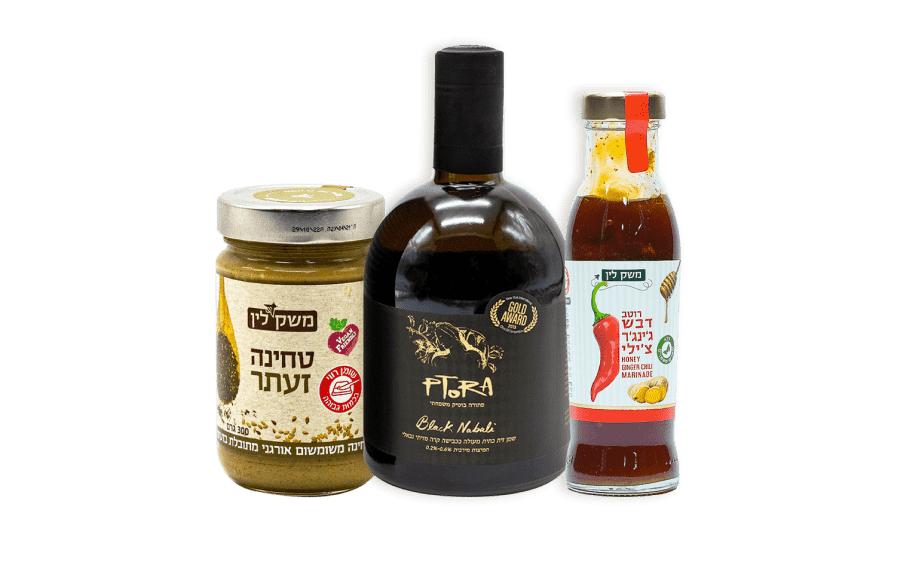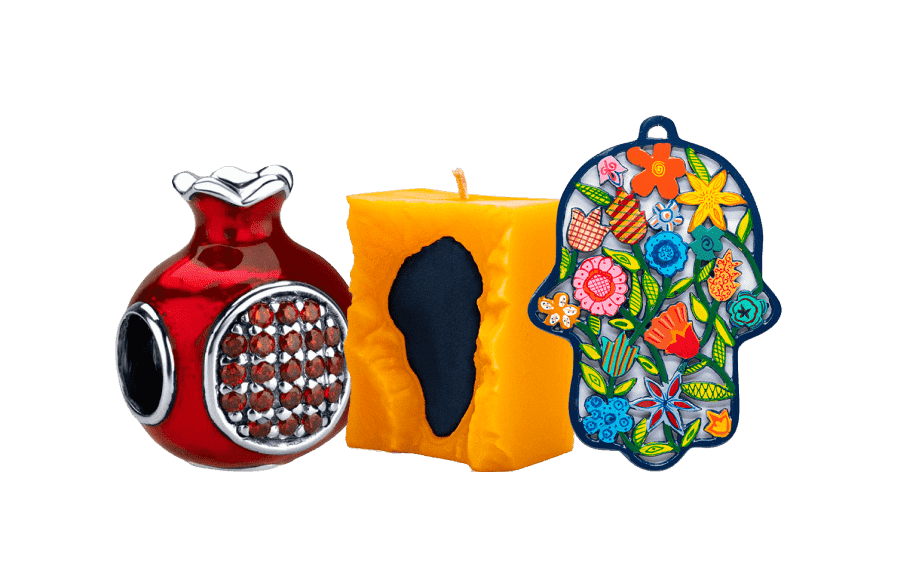On Passover, we don't consume foods containing leavened grain, like bread or wheat crackers. So it's the perfect time to create some delicious dishes using the ingredients we are permitted to use!
On Passover, we celebrate the redemption of our ancestors from slavery and the exodus from Egypt. It was preceded by the epic Ten Plagues, in which God, through his messenger Moses, wore down Pharaoh's stubborn refusal to free the Jewish people. The events of Passover are commemorated on Seder night, where we recite the Haggadah, which retells the story of the exodus, and take part in the rituals designed to give us a taste of what it was like for our ancestors to be redeemed by God.
On that same night, the 15th of the Hebrew month of Nisan, the tenth and final plague, the killing of the firstborns had taken hold across Egypt. Before it began, Moses commanded the Jewish people to sacrifice a Pascal lamb and mark their doorposts with its blood. The fulfillment of this commandment protected them from the plague which passed over their households. Before they departed the next morning, the Jews baked bread, but it had no time to rise as they were hurrying to leave Egypt, meaning the bread ended up unleavened. And these are the origins of the custom of not eating leavened foods on Passover. And what did they eat you may ask? Matzo of course!
On that same night, the 15th of the Hebrew month of Nisan, the tenth and final plague, the killing of the firstborns had taken hold across Egypt. Before it began, Moses commanded the Jewish people to sacrifice a Pascal lamb and mark their doorposts with its blood. The fulfillment of this commandment protected them from the plague which passed over their households. Before they departed the next morning, the Jews baked bread, but it had no time to rise as they were hurrying to leave Egypt, meaning the bread ended up unleavened. And these are the origins of the custom of not eating leavened foods on Passover. And what did they eat you may ask? Matzo of course!

From Matzo to horseradish, these are the foods we eat at the Passover Seder!
At the table on Seder night lies the symbolic foods of Passover which are placed on the Seder Plate, along with plenty of Matzah and wine! Some items may vary slightly, as with all different cultures and traditions, but the concept remains the same: celebrating our freedom! Here are some items you can expect to find at a traditional Passover Seder.
Matzah
This is our bread for the next seven days (eight if you don't live in Israel). These thin cracker-like matzos come in round and square shapes and contain nothing more than flour and water. Matzah must be baked for precisely 18 minutes, any longer, and it will rise - meaning it is leavened and unusable for Passover! It is perhaps the most symbolic food of Passover, exactly what our ancestors ate when they left Egypt!
Wine
On Passover, we celebrate our freedom, and we do so by drinking four cups of wine during the Seder (or grape juice for those who prefer). When we drink, we are instructed to lean to the left, a custom of ancient royalty!

The Seder Plate:
The Shankbone
This represents the sacrifice of the Pascal Lamb, which the Jews slaughtered the night before the Exodus. In Hebrew, it is called Zeroah, which means arm, and refers to the phrase in which God says to the people, "I will redeem you with an outstretched arm."
Hard-boiled egg
The egg represents the offering brought to the Holy Temple before the major Jewish festivals. It is also a symbol of the beginning of life, which is essentially what the Jewish people experienced with their redemption!
Bitter Herbs
Usually, horseradish or romaine lettuce is used to represent the bitterness of the 116 years that the Jewish nation was enslaved in Egypt.
Charoset
This is a paste of a mixture of fruits, such as apples and pears, blended with nuts and wine. Mizrahi Jews have their own version called Halek, which is a mix of silane (pure date syrup) and crushed walnuts. Charoset represents the bricks and mortar the Jews painstakingly produced in Egypt. The bitter herbs are traditionally dipped into the charoset.
Karpas
Celery or parsley is dipped into salt water or lemon juice for Karpas, representing the backbreaking work and the tears shed during their servitude in Egypt.

Learn to make this essential Passover dish, Matzo Ball Soup!
Matzo Balls
6 eggs
1/2 cup water
1/4 cup oil
1.5 cups matzo meal
1/2 teaspoon baking powder
Salt & Black Pepper
1/4 cup fresh dill
Soup
1 onion, diced
1/2 carrot, diced
1/2 cup celery, diced
8 cups chicken stock
2 whole chicken breasts
1/4 cup fresh parsley
1-2 sprigs of fresh dill
Recipe:
To make the Matzo balls, mix together the eggs, water, oil, and season with salt and pepper. Then gradually stir in the dill and matzo meal and mix well. Place in the fridge for at least an hour or longer if you aren't making the soup immediately.
When you are ready to make the soup, take out the bowl and boil a large pot of water. Add some salt to the pot, and then take a golf ball-sized chunk of the matzo ball mixture and form it into a round ball. Repeat until you have used up all the mixture. Then carefully lower the matzah balls (making sure there is enough room for them - otherwise add an additional pot or cook in batches) into the boiling pot and let them cook for around 20-30 minutes until fully cooked.
For the soup, put the onions, chicken stock, and chicken into a big pot and boil, then let it simmer for around 10 or so minutes. At this point, you can throw in the carrots and celery, followed by the parsley. Cook for another 10-15 minutes until the chicken is cooked and the vegetables are no longer hard.
You can now remove the chicken and fish out the onion and parsley, leaving behind just the soup. Now add the matzo balls to the soup and garnish with some fresh dill. Your Matzo ball soup is ready!
The festival of Passover is the one festival in the Jewish calendar that takes the most preparation. Thirty days before, the men of the family began to learn the many laws and customs of Passover, and the spring cleaning period starts at home!
By the time Passover arrives, we aren't just celebrating freedom from slavery, but from dust and dirt in the home! It's also a time of miracles, and the cleaning often reveals the miraculous discovery of items that have gone missing for many months. In the Holy Land, the entire country is busy getting ready for Passover. Restaurants, supermarkets, and those in the food industry are busy cleaning and repurposing their premises to be open during the days between the festival. In the air is the smell of baking as the factories and community bakeries work continuously to bake fresh matzos to use on Seder night and during Passover. And families shop for new clothes and purchase new dining sets to honor the festival. From the Seder nights to the delicious food to the time spent with family and in the Synagogue, Passover is truly the festival of freedom!

Feel the love of the Holy Land wherever you are through products made with love by Israel's pioneers!
Across the Holy Land, hundreds of pioneers toil to produce items that are unique, meaningful, and of the highest quality. They are dedicated to a life of simplicity, living in small communities across the Biblical Heartlands of Judea and Samaria, the Golan Heights, and the Galilee, away from the major population centers such as Jerusalem and Tel Aviv. They focus on working the land and connecting to the regions where our Biblical ancestors once lived. Every month, subscribers to our surprise packages experience 7-9 of the pioneer's finest products.
The products express the pioneer's deepest love and gratitude to the subscribers who provide such vital support, enabling them to continue rejuvenating the Holy Land!
So when the recipients open their surprise packages, see, feel, and use the products, and read about the pioneers in the accompanying magazine, they will feel genuine love and closeness with the pioneers and the Holy Land!









